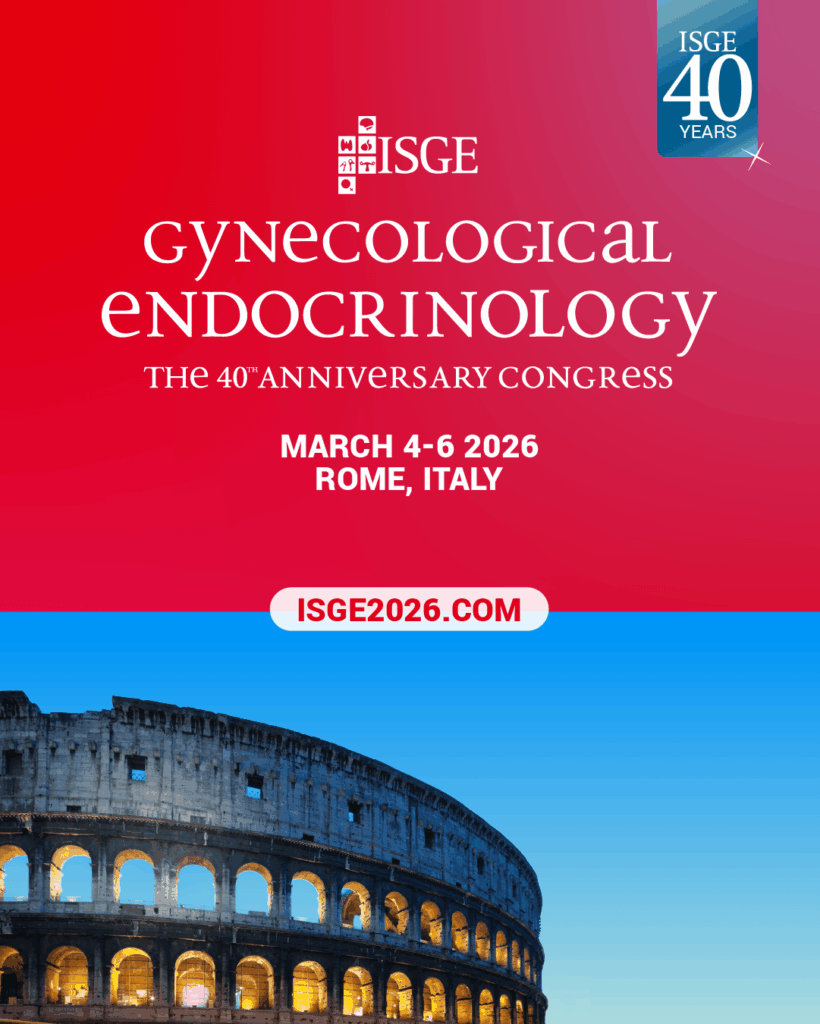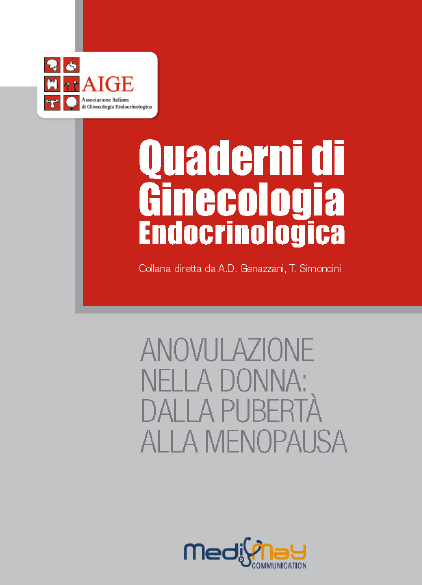-
SEVTAP KILIC, NAFIYE YILMAZ, EBRU ZULFIKAROGLU, GOKCEN ERDOGAN, MURAT AYDIN, SERTAC BATIOGLU
Inflammatory-metabolic parameters in obese and nonobese normoandrogenemic polycystic ovary syndrome during metformin and oral contraceptive treatment
Gynecological Endocrinology, 2011; 27(9): 622–629
Abstract
Our aim was to evaluate the optimal treatment strategy addressing cardiovascular risk in obese and nonobese patients with polycystic ovary syndrome (PCOS). We planned a prospectıve randomized clinical study. Normoandrogenemic and oligoamenorrheic women with PCOS and impaired glucose tolerance (n¼96) were enrolled in the study. Six months of treatment with metformin HCL or oral contraceptive pills (OCPs) were given to the patients. Group 1 were obese and receiving metformin. Group 2 were obese and receiving OCPs. Group 3 were nonobese and receiving metformin, and Group 4 were nonobese receiving OCPs. ADMA, homocysteine, high sensitive C-reactive protein (hs-CRP) and homeostasis model assessment estimate of insulin resistance (HOMA-IR) were investigated. ADMA, homocysteine, hs-CRP and HOMA-IR were similar in obese and nonobese groups before the treatment. After 6 months of treatment, a significant decrease was observed in ADMA, homocysteine and HOMA-IR levels in Groups 1 and 3. An increase in ADMA and hs-CRP levels was observed in Groups 2 and 4. In this study, metformin treatment leads to improvement in hormonal and metabolic parameters and decreases ADMA and homocysteine levels possibly independent of BMI. However, the use of oral contraceptives in obese and nonobese patients with PCOS with impaired glucose tolerance increases ADMA and hs-CRP levels and creates an increase in the metabolic risk.
-
KLAUS BUHLER & OLAF NAETHER
A 2:1 formulation of follitropin alfa and lutropin alfa in routine clinical practice: a large, multicentre, observational study
Gynecological Endocrinology, 2011; 27(9): 650–654
Abstract
Background. A 2:1 (150 IU:75 IU) follitropin alfa:lutropin alfa formulation has been developed. A 3-year post-marketing surveillance study is ongoing in Germany to explore the use of this formulation in routine clinical practice.
Materials and methods. An 11-month interim analysis of data from assisted reproductive technology (ART) cycles only is described.
Results. Data were available from 857 patients undergoing 919 cycles of ART at 19 centres. Most patients (58.7%) were aged >35 years, and many (41.3%) were undergoing their first ART cycle. Main reasons cited by physicians for prescribing this formulation were poor response in a previous treatment cycle (n=303) and low basal luteinizing hormone (LH) level (n=107). Mean (standard deviation) duration of ovarian stimulation was 10.8 (2.6) days. In 90.7% of cycles, the 2:1 formulation was administered throughout the stimulation period.Most frequent LH daily dose was 75 IU. Embryo transfer was conducted in 741 cycles; clinical pregnancy rate per transfer was 27.5%. Three cases of ovarian hyperstimulation syndrome developed in three patients (3/741 [0.4%] cycles); one required hospitalization. No other major safety events were reported.
Conclusion. This interim analysis shows that use of the 2:1 formulation for ovarian stimulation during routine ART procedures is effective in achieving clinical pregnancies and is associated with a positive safety profile.
-
PETER CHEDRAUI, WINSTON JARAMILLO, FAUSTINO R. PE REZ-LO´ PEZ, GUSTAVO S. ESCOBAR, NANCY MOROCHO, LUIS HIDALGO
Pro-inflammatory cytokine levels in postmenopausal women with the metabolic Syndrome
Gynecological Endocrinology, 2011; 27(9): 685–691
Abstract
Background. Prevalence of the metabolic syndrome (METS) and its components significantly increase after the menopause. Related increased cardiovascular risk may partially be explained by a pro-inflammatory state.
Objective. To assess pro-inflammatory cytokine serum levels in postmenopausal women with and without the METS. Methods. Serum of 90 postmenopausal women who previously participated in a METS screening programme was analysed for tumour necrosis factor-alpha (TNF-a) and interleukin 6 (IL-6). Cytokine levels were compared among those with and without the syndrome, and for each of its components. Linear relationships were also assessed between cytokine levels and several continuous variables including each diagnostic METS criteria and menopausal symptoms assessed with the Menopause Specific Quality of Life tool (MENQOL).
Results. To assess pro-inflammatory cytokine serum levels in postmenopausal women with and without the METS. Methods. Serum of 90 postmenopausal women who previously participated in a METS screening programme was analysed for tumour necrosis factor-alpha (TNF-a) and interleukin 6 (IL-6). Cytokine levels were compared among those with and without the syndrome, and for each of its components. Linear relationships were also assessed between cytokine levels and several continuous variables including each diagnostic METS criteria and menopausal symptoms assessed with the Menopause Specific Quality of Life tool (MENQOL).
Conclusion(s). Pro-inflammatory cytokine levels in this postmenopausal series positively correlated with age, time since the menopause, abdominal circumference, blood pressures levels and the number of positive METS diagnostic criteria. There is a need for more research in this regard.
-
MIYUKI HARADA, YUTAKA OSUGA, GENTARO IZUMI, MASASHI TAKAMURA, YURI TAKEMURA, TETSUYA HIRATA, OSAMU YOSHINO, KAORI KOGA, TETSU YANO, & YUJI TAKETANI
Dienogest, a new conservative strategy for extragenital endometriosis: a pilot study
Gynecological Endocrinology, 2011; 27(9): 717–720
Abstract
Extragenital endometriosis severely impairs the quality of life for affected women but its standard management has not yet been well established because of its relatively low incidence. As extragenital organs, intestine, followed by urinary tract, is the most common place affected by endometriosis, for which surgical treatment is sometimes difficult and accompanied by severe complications. Recently, dienogest, a novel progestin, has emerged as a new alternative for endometriosis, especially for endometriosis-associated pain. In this report, we presented four cases with rectosigmoidal and one with bladder endometriosis, treated with oral 2 mg/day dienogest for over 6 months. For all cases, the measurable extragenital lesions exhibited the reduction in their size after 10 to 11 months of use, accompanied with immediate relief of subjective symptoms related with extragenital lesions. This report suggests that dienogest can be a novel conservative alternative for extragenital endometriosis.
-
Delia Scholes, Rebecca A. Hubbard, Laura E. Ichikawa, Andrea Z. LaCroix, Leslie Spangler, Jeannette M. Beasley, Susan Reed and Susan M. Ott
Oral Contraceptive Use and Bone Density Change in Adolescent and Young Adult Women: A Prospective Study of Age, Hormone Dose, and Discontinuation
Journal of Clinical Endocrinology & Metabolism 2011, 96: E1380-E1387
Abstract
Context: Oral contraceptive (OC) use is common, but bone changes associated with use of contemporary OC remain unclear. Objective: The objective of the study was to compare bone mineral density (BMD) change in adolescent and young adult OC users and discontinuers of two estrogen doses, relative to nonusers. Design and Setting: This was a prospective cohort study, Group Health Cooperative. Participants: Participants included 606 women aged 14–30 yr (50% adolescents aged 14–18 yr): 389 OC users [62% 30–35 μg ethinyl estradiol (EE)] and 217 age-similar nonusers; there were 172 OC discontinuers. The 24-month retention was 78%. Main Outcome Measure: The main outcome measure was BMD measured at 6-month intervals for 24–36 months. Results: After 24 months, adolescents using 30–35 μg EE OCs, but not those using lower-dose OCs, had significantly smaller adjusted mean percentage BMD gains than nonusers at the spine [group means (95% confidence interval for between group differences) 1.32 vs. 2.26% (−1.89, −0.13%)] and whole body [1.45 vs. 2.03% (−1.29%, −0.13%)]. Adolescents who discontinued 30–35 μg EE OC showed significantly smaller gains than nonusers at the spine after 12 months [0.51 vs. 1.72% (−2.38%, −0.30%)]. Young adult OC users did not differ from nonusers. However, OC discontinuers of both doses differed significantly from nonusers at the spine 12 months after discontinuation [−1.32% < 30 μg EE, −0.92% 30–35 μg EE vs. +0.27% nonusers (−2.48, −0.54, and −1.94%, −0.55%, respectively)]. Results were similar for mean absolute BMD change (grams per square centimeter). Conclusions: Both OC use and discontinuation were associated with BMD losses/smaller gains relative to nonusers (differences < 2% after 12–24 months for all skeletal sites). The clinical significance of these results regarding future fracture risk is unknown. Study of longer-term trends after discontinuation is needed. .
-
Susan Hutfless, Peter Matos, Monica V. Talor, Patrizio Caturegli, and Noel R. Rose
Significance of Prediagnostic Thyroid Antibodies in Women with Autoimmune Thyroid Disease
J Clin Endocrinol Metab 2011, 96: E1466–E1471
Abstract
Introduction: Antibodies to thyroglobulin (Tg), thyroperoxidase (TPO), and TSH receptor (TSH-R) are prevalent in autoimmune thyroid diseases. We aimed to assess whether females with Graves disease or Hashimoto thyroiditis are more likely than age-matched controls to have thyroid antibodies before clinical diagnosis and to measure the timing of antibody seroconversion.
Methods: This was a nested case-control study using the Department of Defense Serum Repository and the Defense Medical Surveillance System, 1998–2007. We assessed thyroid antibodies in the serum of 522 female, active-duty, military personnel including: 87 Graves disease cases, 87 Hashimoto thyroiditis cases, and 348 age matched controls. One serum sample was available at the time of the clinical diagnosis (±6 months); three additional samples were retrieved from the repository up to 7 yr before the clinical diagnosis, for a total of 2088 samples.
Results: In Hashimoto thyroiditis, TPO antibodies were found in about 66% of the cases at all time points. Tg antibodies showed a similar stationary trend, at a lower prevalence of about 53% at all time points. No TSH-R antibodies were found. In Graves disease, TPO antibodies gradually increased from 31% at 5–7yr prior to diagnosis to 57% at diagnosis and Tg antibodies from 18 to 47%.TSH-Rantibodies were present before diagnosis and showed an increasing prevalence from 2, 7, 20, to 55%.
Conclusions: Antibodies to Tg, TPO, and TSH-R precede by years the development of the diagnostic autoimmune thyroid diseases phenotype. Overall, the presence of thyroid antibodies in apparently healthy individuals should not be neglected.
-
Ryan A. Stone, Josephine Huffman, Niki Istwan, Cheryl Desch, Debbie Rhea, Gary Stanziano and Saju Joy.
Pregnancy Outcomes Following Bariatric Surgery
Journal of Women’s Health. September 2011, 20(9): 1363-1366
Abstract
Objective: To compare pregnancy outcomes postbariatric surgery for women who remain obese at conception to those who were not obese.
Methods: From a database of women who received outpatient perinatal services, we identified women with a history of bariatric surgery who are currently pregnant with a singleton gestation. Available maternal characteristics and pregnancy outcomes were compared between women whose prepregnancy body mass index (PPBMI) remained in the obese range (≥30 kg/m2) and those with a PPBMI of <30 kg/m2 using Fisher exact test, independent Student’s t test, and Mann-Whitney U test statistics.
Results: Of the 102 women identified, 52 (51%) were obese and 50 (49%) were not obese at conception. No differences were observed in maternal age, marital status, years from surgery to delivery, development of gestational diabetes, gestational age at delivery, neonatal intensive care unit (NICU) admission, or nursery days. Maternal obesity (≥30 kg/m2) postbariatric surgery was associated with higher rates of cesarean delivery (63.5% vs. 36.0%, p=0.010) and development of pregnancy-related hypertension (36.5% vs. 8.0%, p=0.001) compared to nonobese women (<30 kg/m2).
Conclusions: Postbariatric surgery, an optimal goal should be to achieve a nonobese weight status before conception to reduce maternal complications, such as pregnancy-related hypertension and cesarean delivery. .
-
Lauren R. Harms, Thomas H.J. Burne, Darryl W. Eyles, John J. McGrath
Vitamin D and the brain
Best Practice & Research Clinical Endocrinol & Metab 25: 657-669, 2011
Abstract
Vitamin D is a member of the superfamily of nuclear steroid transcription regulators and as such, exerts transcriptional control over a large number of genes. Several other steroids, such as thyroid hormones, vitamin A, androgens and the glucocorticoids, are known as ‘neurosteroids’ and their role in brain development and function is well defined. It has only been in the last decade or so that vitamin D has been thought to function as a neurosteroid. In this review we have collated a diverse array of data describing the presence of vitamin D metabolites and the receptor in the brain, the evidence that vitamin D may be an important modulator of brain development, and the potential role of vitamin D in neurological and neuropsychiatric disorders.
-
Roberto Romero
Vaginal progesterone to reduce the rate of preterm birth and neonatal morbidity: a solution at last
Women’s Health, September 2011, Vol. 7, No. 5, Pages 501-504.
Abstract
“After many efforts to attempt to reduce the rate of preterm birth and neonatal morbidity, a strategy to identify the patient at risk with cervical ultrasound in the midtrimester and a targeted intervention with vaginal progesterone have been shown to reduce the rate of preterm birth and neonatal morbidity … and be cost effective”.
-
Kate Maclaran & Nick Panay
Managing low sexual desire in women
Women’s Health 2011, Vol. 7, No. 5, Pages 571-583.
Abstract
Low sexual desire is a prevalent symptom, but not one frequently volunteered by women. When accompanied by distress, loss of libido is known as hypoactive sexual desire disorder, which can have a significant impact on a woman’s wellbeing. The etiology of hypoactive sexual desire disorder is multifactorial and its management requires a combination of psychosocial and pharmacological interventions. This article outlines the assessment of patients presenting with the symptom of low sexual desire and discusses the evidence for pharmacological management.
-
Danielle E Luciano & Anthony A Luciano
Management of endometriosis-related pain: an update
Women’s Health 2011, Vol. 7, No. 5, Pages 585-590
Abstract
Endometriosis is a chronic and recurrent condition affecting 6–10% of women of a reproductive age. It results from implantation of endometrial tissue outside the uterine cavity. It is associated with pelvic pain and infertility. Treatment for endometriosis ranges from medical management, to conservative surgery, to definitive surgery with a hysterectomy and bilateral salpingo-oophorectomy, and should be based on patient’s fertility desires and tolerance. Medical treatment involves hormonal manipulation to induce a hypoestrogenic or antiestrogenic state to induce regression and apoptosis of lesions. Endometriosis can have dire effects on women’s lives and productivity; this article will focus on early diagnosis, treatment and prevention of recurrence of the disease.






